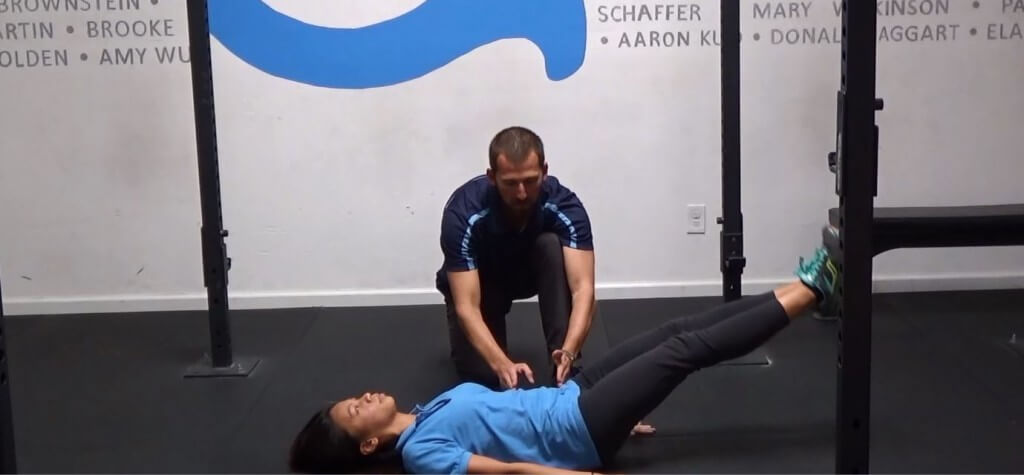Fixing Dryland Training Mistakes: Leg Lifts

Core muscle exercises were reportedly the main reason for dryland when Dr. Krabak interviewed coaches. The reason for this was injury prevention. Unfortunately, coaches have limited education on injury prevention or rehabilitation, making their well intentions miss the mark. We’ve talked about the core and dry-land mistakes before in Dryland mistake: Spinal Flexion, now we will tackle another common core exercise and debunk a few myths, the straight-leg raises or leg lifts.
Head to any pool deck and you’ll see athletes lying on their back kicking their legs. After the hip flexors cramp up a few times, you think a coach or athlete would put together the error with this exercise for core strengthening, but to no chagrin it remains on pool decks.
Why are leg lifts a mistake? Do they it activate the core? Simply put, the exercise is a mistake when used excessively. Does it activate the core? Not really.
Stuart McGill, a leading researcher on core muscle activation, performed surface electromyography (EMG) on a group of subjects and found the leg lifts exercise was the greatest activator of the psoas and rectus femoris (both hip flexors), a moderate activator of the rectus abdominus (the 6-pack muscle) and external oblique, and a poor activator of the internal oblique, internal oblique, and transverse abdominus. As you see, the exercise clearly highly activates the hip flexors, while minimally activating the non-superficial core musculature.
This muscle activation occurs with correct form. Head to any swim team’s dryland session and you’ll certainly see poor form, as many teams have horrendous coach-to-swimmer ratios (in the pool and in dryland), inadequate monitoring, and overzealous programs (especially in youth swimmers). This results in swimmers arching their low back, increasing joint pressure, and increasing the risk of injury while minimally strengthening the core!
Poor core activation and increased risk of injury…double whammy!
When I see swimmers with low back pain, I ask them:
“Do you sit a lot?”
“Do you sleep on your side with your knees to your chest?”
“Do you do a lot of leg lifts for dryland?”
If you want to learn more about core training for swimmers, consider purchasing Swimming Core Training. If you are interested in having Dr. John, DPT and COR develop your dryland programs, contact us today we have 2 team positions remaining.



